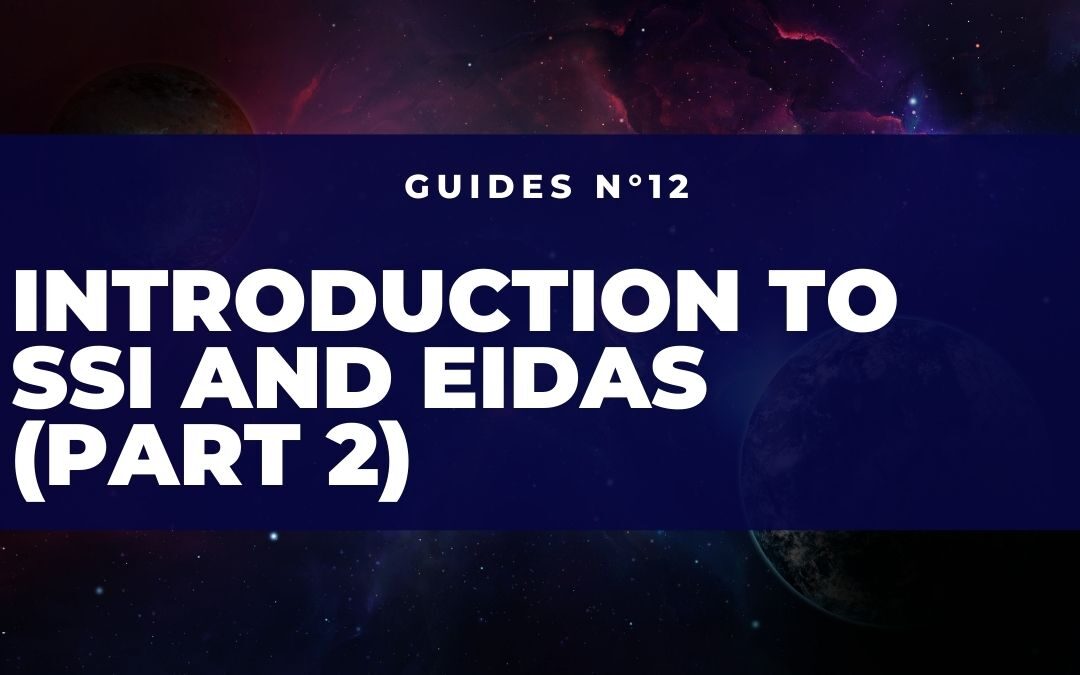In the last guide, we talked about a very important topic within Europe: the eIDAS regulation.
The idea of the regulation, explained in very simple words, is to guarantee a kind of European citizenship in the digital world. The objectives of the regulation are therefore to remove obstacles to the exercise of the rights of European citizens, to allow citizens to use their certified electronic identification to authenticate themselves within public services and to create a common basis for secure economic interactions between businesses, improving the effectiveness of electronic services for private and non-private entities.
eIDAS is therefore a real regulation that allows European citizens to use a “verified” identity within European public and private services.
Self Sovereign Identity
Self Sovereign Identity (SSI) is undoubtedly one of the most important technological revolutions taking place in the world of digital identity. For this reason, it is important to understand how this new paradigm can interact with existing regulations in the field of electronic and digital identity.
In the world of digital identity, as we have seen here (add link) and here (add link), the SSI is the last frontier, destined to profoundly change the way in which we all manage our personal data and interact with different services.
We have already seen, in one of the previous guides, how SSI can potentially interact with the GDPR regulation.
What is happening in relation to the eIDAS Regulation?
Self Sovereign Identity and eIDAS
Since the two topics are very close to each other, it is conceivable that in some way these two will be made “integrable”.
What is meant by ‘integrable’? The idea is that the SSI paradigm will be able to work, being aligned with the eIDAS regulation, and thus allowing users to create so-called ‘qualified’ identities also in a Self Sovereign regime.
The most important activity that is being carried out is the eIDAS Bridge.
The eIDAS Bridge is an initiative carried out by the European Commission that aims to create a real “bridge” to connect the two issues: an eIDAS Bridge.
eIDAS Bridge
At European level, the idea is already developing that Self Sovereign Identity has the potential to improve the way citizens manage their digital identities, as well as the ability to offer public administrations new ways to verify citizens’ identities and offer more efficient public services.
Therefore, one of the initiatives that have emerged to ensure that citizens are authenticated with this innovative method for public services, in a way that is aligned with regulations, is The eIDAS Bridge.
The latter is an initiative that aims to assist the issuer in the process of signing a VC and the verifier in the process of verifying the credentials themselves, to help identify the issuer (a legal entity within the EC) behind an issuer’s DID.
A VC passed from a user to a verifier via the eIDAS Bridge is demonstrably verified and trusted.
The Bridge thus acts as an ‘alignment’ between ‘traditional’ digital identity regulation and this new paradigm (SSI) that is increasingly growing but needs to be supported by appropriate regulatory safeguards.
In the context of the Innovative Public Services action of the ISA2 programme, the European Commission has tested the new model of identity verification, finding great benefits in terms of protection and improvement in the management of citizens’ personal data.
In general, the SSI and its alignment with eIDAS could lead the European Union to a citizen-centric approach as opposed to the traditional government-centric approach. With the SSI, a citizen would only have to apply once for a credential from a public administration, store it and share it without losing control of it when he or she starts using different services across different public administrations.
The eIDAS Bridge project is at an early stage of implementation, and is being deployed within the context of the European Self-Sovereign Identity Framework (ESSIF), one of the use cases selected by the European Blockchain Partnership (EBP) and the European Commission that is being developed as part of the European Blockchain Services Infrastructure.
For more information on the project, you can also find the technical specifications at this page. eIDAS Bridge could really represent a step forward in a European perspective for the success and diffusion of this innovative paradigm: the Self Sovereign Identity. The project will have to be developed further (it is still in its infancy), but the conditions for its success are already in place.

